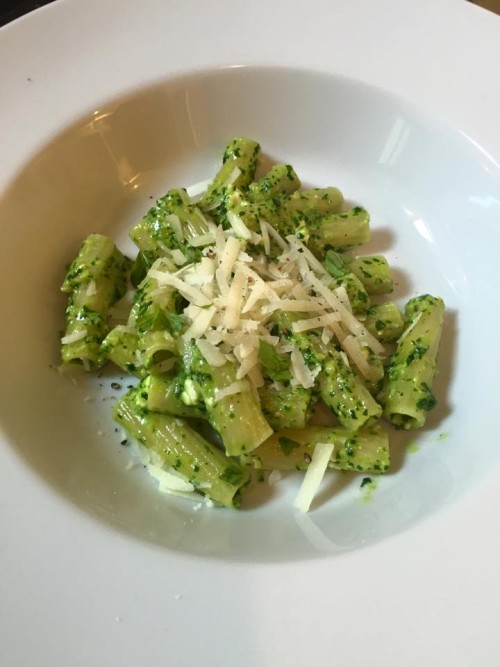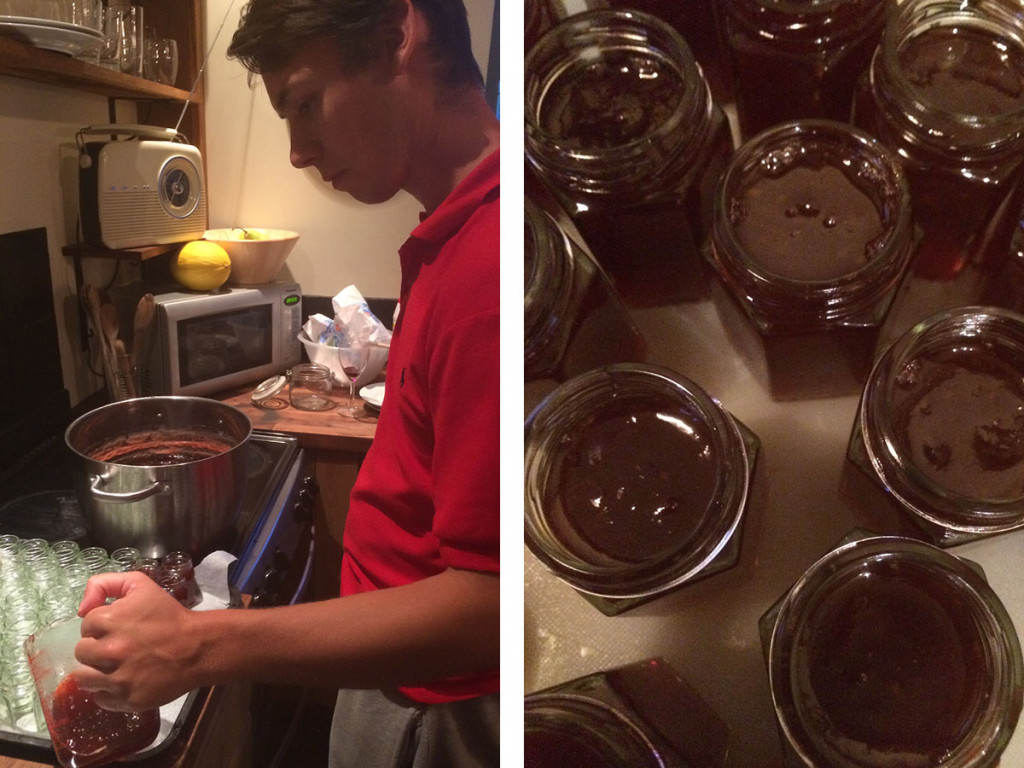Nothing smells more like summer than elderflower, and harvesting it to make cordial left our whole house smelling gorgeous.
We have our very own elderflower tree in the garden, so we didn’t have to race any local pensioners to collect the flowers just as they bloomed, we could wait and pick the best blooms at the perfect time – apparently on a nice dry day, early in the morning when the scent is strongest. 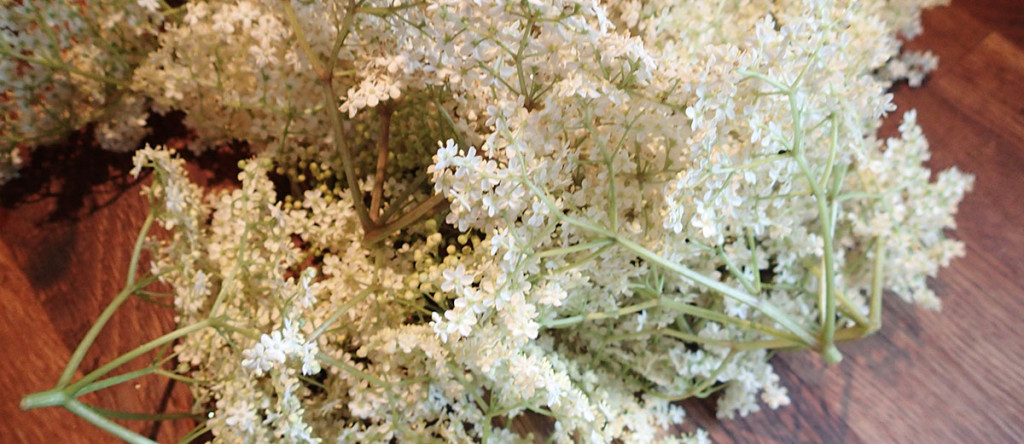
The recipe we used to make our cordial is:
- 2½ kg white sugar, either granulated or caster
- 2 unwaxed lemons
- 20 fresh elderflower heads, stalks trimmed
- 85g citric acid
You can usually get citric acid from the chemists, but all of ours around here had run out. In the end we met a lady in Frome by chance who happened to have some left from a school project. David helped her carry her bags home in return for a packet of it!
First off we zested the lemons and cut them into slices, and we found a clean tea towel and some garden twine for covering the pot when we’re done. We put the sugar (it is a LOT of sugar) with one and a half litres of tap water into a great big stockpot we bought cheaply in IKEA. You have to heat the mix but not boil it, stirring to dissolve the sugar.
Once the sugar is all dissolved you can turn up the heat and get the mix boiling, and then turn off the heat. We rinsed the flowers briefly in cold tap water to remove any insects, and then dropped them into the syrup with the lemon slices, zest and citric acid. Apparently the citric acid helps to keep the cordial clear. Then we tied the tea towel around the top of the pan (instead of using the lid – it needs to be able to breath) and left it for 24 hours. 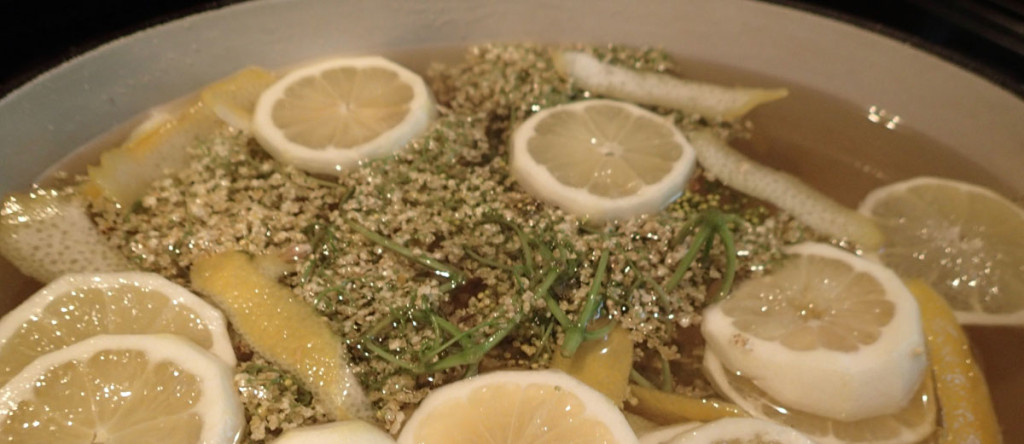
The next day we removed the tea towel and used this to strain the syrup – you’re supposed to use muslin cloth but this did the job fine. We ladled the syrup through the tea towel into a bowl and the threw out the flowers. We sterilize the bottles we were using by washing them with soap and water, and then rinsing with boiling water and drying in the oven. 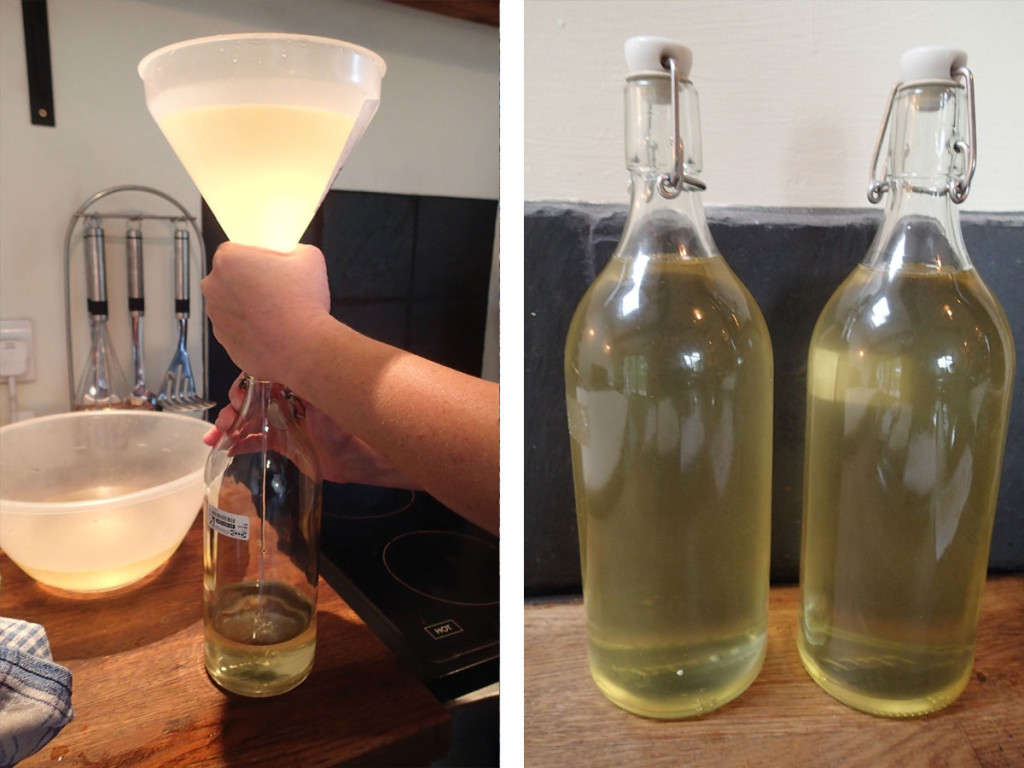
The cordial is really tasty, especially when it is mixed with fizzy water. We froze one bottle and gave one to my Nan and Grandad, and we’ve been enjoying the others all summer!
